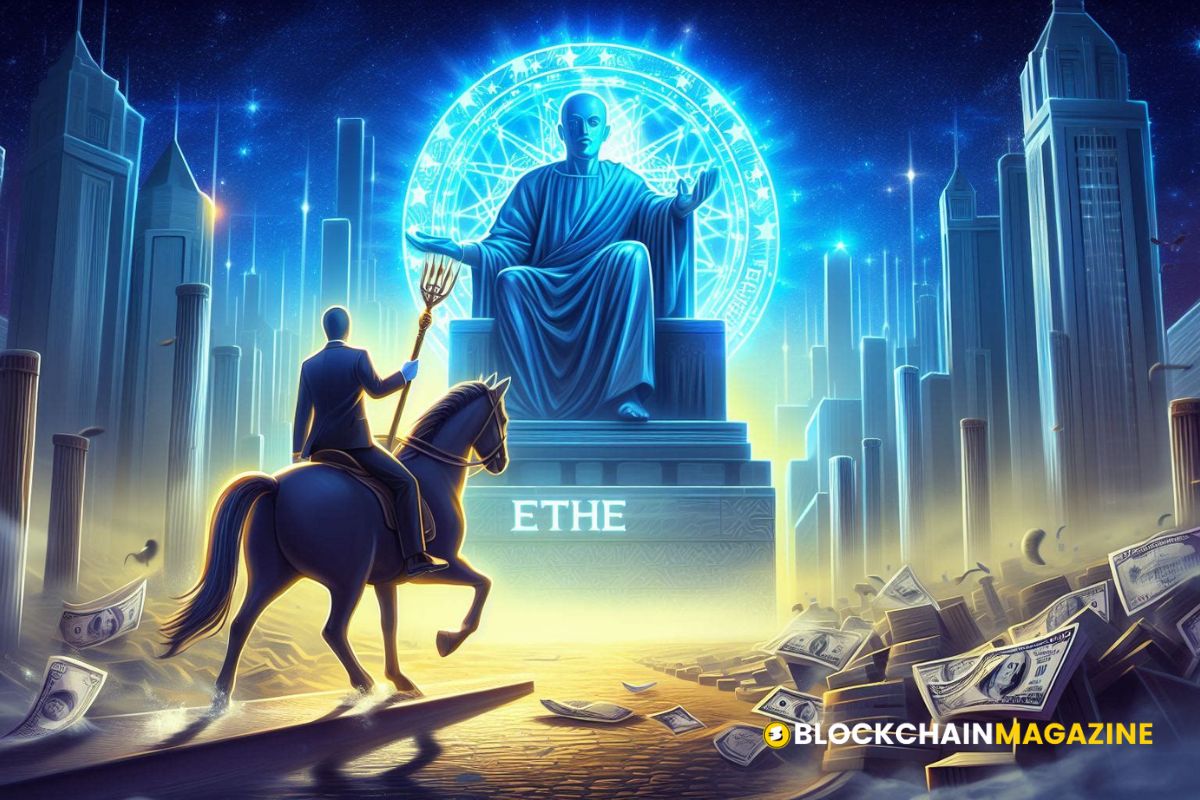Crypto Market Surges: Key Trends and Predictions for 2025
The crypto market is buzzing with excitement as we look towards 2025. There’s a lot going on, from Bitcoin’s ongoing influence to new tech shaking things up. Stablecoins are making waves, and regulations are changing the game. With all these shifts, investors are both excited and a bit cautious about what the future holds. Let’s dive into some key takeaways from this ever-evolving market.
Key Takeaways
- Bitcoin remains a strong force in the crypto market, with its influence expected to continue through 2025.
- Stablecoins like USDT and USDC are becoming more important, especially in decentralized finance (DeFi).
- Regulations are tightening, which could affect how institutions and individuals engage with cryptocurrencies.
- New technologies in blockchain and emerging cryptocurrencies are likely to reshape the market landscape.
- Geopolitical factors and global economic changes will play a significant role in the adoption and regulation of cryptocurrencies.
Bitcoin’s Dominance and Future Prospects
Bitcoin’s Role in the Crypto Market
Bitcoin continues to be the cornerstone of the crypto market. Its reputation for trust and liquidity makes it the go-to choice for investors. Federal Reserve Chair Jerome Powell even likened Bitcoin to gold, describing it as “virtual” and “digital,” which speaks volumes about its growing acceptance in the financial world.
Impact of Spot Bitcoin ETFs
The introduction of spot Bitcoin ETFs has been a game-changer. These funds have attracted over $60 billion in less than a year, proving the immense demand for Bitcoin. Major players like iShares and Fidelity have launched these ETFs, marking them as some of the fastest-growing financial products ever. This trend is likely to continue, boosting Bitcoin’s market presence even further.
Bitcoin’s Price Predictions for 2025
As we look towards 2025, Bitcoin’s price is projected to soar. Analysts predict it could surpass $150,000 in the first half of the year and potentially reach $185,000 by year-end. This growth is driven by increasing institutional and corporate adoption, as well as potential nation-state interest. The idea of a U.S. strategic Bitcoin reserve under President-elect Trump is also gaining traction, with some speculating it could propel Bitcoin’s price to $500,000. Institutional interest, backed by regulatory changes and the approval of Bitcoin ETFs, is setting the stage for significant price hikes. Speculation around Bitcoin’s future continues to intensify, especially with discussions about a strategic reserve.
The Rise of Stablecoins in the Crypto Market
Stablecoins and DeFi Integration
Stablecoins have become a backbone in the decentralized finance (DeFi) space. Their ability to maintain a stable value makes them an ideal choice for DeFi platforms, enabling seamless transactions and lending activities. In 2025, the integration of stablecoins into DeFi is expected to deepen, with more platforms adopting them to facilitate liquidity and reduce volatility. This trend signifies a shift towards more stability in an otherwise volatile market. The role of stablecoins in DeFi is not just limited to transactions; they are also pivotal in yield farming and staking activities.
USDT and USDC: Market Leaders
Tether (USDT) and USD Coin (USDC) stand out as the leading stablecoins, largely due to their widespread adoption and liquidity. However, Tether’s dominance is expected to wane as new players like BlackRock’s BUIDL and Ethena’s USDe offer competitive yields. USDC, backed by Circle, continues to innovate, potentially integrating with fintech platforms to offer rewards on balances. This competition is reshaping the stablecoin landscape, pushing issuers to innovate and offer more value to users.
Regulatory Challenges for Stablecoins
The regulatory environment for stablecoins is evolving rapidly. In 2025, legislation is anticipated to be enacted in the U.S., providing a framework for stablecoin issuers. This regulatory clarity is expected to boost confidence among institutional investors and traditional banks, leading to broader adoption. However, the path to regulation is not without challenges. Stablecoin issuers must navigate complex compliance requirements to ensure their products meet legal standards. This regulatory scrutiny, while challenging, is essential for the long-term stability and growth of the stablecoin market.
As stablecoins become more intertwined with traditional finance, their role in the global financial system is set to expand significantly, offering new opportunities and challenges for both issuers and users.
Regulatory Developments and Their Impact
Global Regulatory Trends
The regulatory landscape for cryptocurrencies is like a rollercoaster, constantly evolving and keeping everyone on their toes. In 2025, global regulatory trends are expected to shape the future of crypto in ways we’ve never seen before. Some countries are embracing digital assets, crafting rules to foster innovation while protecting consumers. Others are tightening the reins, worried about risks like money laundering and fraud. It’s a mixed bag, and the balance between innovation and regulation is more crucial than ever.
Impact on Institutional Adoption
As regulations become clearer, more institutions are likely to jump on the crypto bandwagon. This clarity provides a safety net, making it easier for big players to get involved without fearing legal repercussions. With potential changes in the U.S. Securities and Exchange Commission (SEC) leadership, there might be a shift towards more favorable regulations, encouraging institutional investors to explore crypto opportunities. This could lead to a boom in crypto products tailored for institutions, like ETFs and custody services.
Future of Crypto Regulations
Looking ahead, the future of crypto regulations seems to be heading towards a more harmonized global approach. Countries might start working together to create standards that ensure security and transparency while allowing the crypto market to thrive. However, geopolitical tensions and differing economic priorities could slow down this process. In the meantime, the crypto community will have to adapt to a patchwork of regulations, navigating a complex landscape as they strive for growth and innovation.
The journey towards a regulated crypto world is like walking a tightrope—balancing innovation with security. As we move forward, finding the right balance will be key to unlocking the full potential of digital currencies.
Technological Innovations Shaping the Market
Advancements in Blockchain Technology
Blockchain technology is evolving, and it’s doing so at lightning speed. We’re seeing improvements that make blockchains more efficient and scalable. One key development is the shift towards proof-of-stake consensus mechanisms, which are more energy-efficient compared to the traditional proof-of-work systems. This transition not only reduces the environmental impact but also enhances transaction speeds and lowers costs. Developers are also working on layer-2 solutions to tackle scalability issues, making blockchain networks more robust and capable of handling increased demand.
Emerging Cryptocurrencies
New cryptocurrencies are constantly entering the market, each promising unique features or capabilities. Some focus on privacy, while others aim to improve transaction efficiency or security. The rise of these emerging cryptocurrencies is creating a more diverse crypto ecosystem. They are often seen as challengers to established coins like Bitcoin and Ethereum, pushing innovation and competition. As these new entrants gain traction, they could potentially reshape market dynamics and offer fresh opportunities for investors.
Security and Scalability Concerns
Security remains a top priority as the crypto market grows. With more users and transactions, the potential for cyber threats increases. Developers are investing in advanced security protocols to protect against hacks and breaches. Scalability is another concern, as networks struggle to accommodate a growing number of transactions. Solutions like sharding and off-chain transactions are being explored to enhance network capacity. Addressing these issues is crucial for the long-term success and adoption of cryptocurrencies.
The crypto market is a wild ride, full of ups and downs. But technological innovations are paving the way for a more secure and scalable future. As these advancements continue, we can expect the market to grow and evolve, offering new opportunities and challenges for investors and developers alike.
In conclusion, the technological landscape of the crypto market is constantly changing. From blockchain advancements to new cryptocurrencies, and ongoing security and scalability challenges, innovation is at the heart of this dynamic market. As we look towards 2025, these technological trends will play a significant role in shaping the future of cryptocurrency.
Market Dynamics: Bulls vs. Bears
Understanding Bull Markets
Bull markets are when prices go up, and investors feel good. Demand rises, pushing prices higher, often because of good news like new tech or friendly laws. These markets can be wild, with prices jumping quickly. But even when prices drop for a bit, the overall trend is up. Confidence drives these markets, with investors willing to take risks for big rewards.
Navigating Bear Markets
Bear markets are the opposite. Prices fall, and people start worrying. There’s more supply than demand, and prices drop. Liquidity dries up as everyone tries to sell. But smart investors see this as a chance to buy cheap, waiting for the next bull run. Patience is key here, as these downturns can last a while.
Market Sentiment and Investor Behavior
How people feel about the market can change everything. In bull markets, optimism can make prices soar even higher. In bear markets, fear can drag prices down further. Investors’ actions, whether buying or selling, often reflect their emotions rather than facts. Lists of factors that influence market sentiment include:
- Economic news and data
- Political events
- Technological advancements
The market is like a living thing, constantly changing with the moods and actions of those who participate in it. Understanding these cycles can offer opportunities for those ready to adapt.
The Role of Geopolitical Factors
Impact of Global Economic Shifts
Global economic changes have always had a ripple effect on the crypto market. As countries strive for economic stability, the use of cryptocurrencies for cross-border payments is becoming more prevalent. This trend highlights a move towards de-dollarization and the diversification of financial systems. Interest rate adjustments in major economies like the US and Canada have also played a crucial role, influencing investor sentiment and liquidity in the market.
Geopolitical Tensions and Crypto Adoption
Geopolitical tensions often lead to economic uncertainty, driving individuals and institutions to seek alternative assets. Cryptocurrencies, with their decentralized nature, offer a hedge against traditional market volatility. Recent political changes, such as new regulatory approaches in the US under the Trump administration, are expected to boost crypto adoption. This shift could potentially lead to increased market participation and innovation.
The Influence of US Policies on the Market
US policies continue to shape the global crypto landscape significantly. With the new administration’s pro-crypto stance, there’s optimism for a more favorable regulatory environment. The potential creation of a national Bitcoin reserve could further position Bitcoin as a strategic asset, akin to digital gold. Such policies not only impact the US market but could also influence global adoption trends as other nations may follow suit.
The Future of Decentralized Finance (DeFi)
DeFi’s Growth and Challenges
Decentralized Finance, or DeFi, is on the brink of a significant expansion as we move further into 2025. With the advent of Central Bank Digital Currencies (CBDCs), DeFi is expected to become more mainstream, integrating seamlessly with traditional financial systems. However, this growth is not without its hurdles. Regulatory scrutiny is intensifying, posing potential challenges to DeFi’s decentralized nature. Yet, this increased attention might also bring about much-needed clarity and stability, encouraging more institutional participation.
- Integration with CBDCs: By 2025, an increasing number of countries are expected to implement operational CBDCs, significantly advancing the mainstream adoption of DeFi.
- Regulatory Clarity: While regulations may seem daunting, they could provide a framework that legitimizes DeFi, attracting more users.
- Technological Advancements: Innovations in blockchain technology will likely solve existing scalability issues, making DeFi more accessible.
Integration with Traditional Finance
The line between traditional finance and DeFi is blurring, with more financial institutions exploring blockchain technology. This integration is expected to bring about a new era of financial services that are faster, cheaper, and more accessible to a global audience. Traditional banks might start offering DeFi services, or we could see partnerships that leverage the strengths of both worlds.
- Partnerships: Banks and DeFi platforms might collaborate, offering hybrid financial products.
- Smart Contracts: These could streamline complex financial operations, reducing costs and time.
- Cross-Border Transactions: The use of DeFi can simplify and expedite international transfers.
Predictions for DeFi in 2025
Looking ahead, the future of DeFi seems promising. As technological and regulatory landscapes evolve, DeFi could become a cornerstone of the global financial system. Here are some predictions for 2025:
- Increased Adoption: With improved user interfaces and education, more people will engage with DeFi platforms.
- Enhanced Security: As the sector matures, security protocols will strengthen, reducing the risk of hacks and fraud.
- Diverse Offerings: Expect a wider range of financial products, from loans to insurance, all powered by DeFi protocols.
The future of DeFi is bright, but it requires careful navigation through regulatory landscapes and technological challenges. As DeFi continues to grow, it holds the potential to reshape the financial world as we know it.
Conclusion
As we look towards 2025, the crypto market is poised at an exciting juncture. With the rise of stablecoins like USDT and USDC, and the ongoing regulatory discussions, the landscape is both promising and challenging. The potential removal of capital gains taxes on American crypto assets could spur further investment and innovation. Meanwhile, Bitcoin’s stronghold remains unshaken, bolstered by institutional interest and new financial products like Bitcoin ETFs. However, the market’s future will be shaped by how well it navigates regulatory hurdles and adapts to technological advancements. Whether you’re a seasoned investor or a newcomer, staying informed and adaptable will be key to thriving in this dynamic environment.
Frequently Asked Questions
What is Bitcoin’s role in the crypto market?
Bitcoin is like the big brother of all cryptocurrencies. It’s the first and most well-known digital coin. People trust it a lot, and it’s used as a standard to measure other cryptocurrencies.
How do stablecoins help the crypto market?
Stablecoins are digital coins that try to keep their value steady, like a dollar. They are used in trading and making transactions smoother, especially in DeFi, where they help keep things stable.
What are the challenges stablecoins face?
Stablecoins can face problems with rules and regulations. Governments want to make sure they are safe and not used for bad things, so they are looking at them closely.
How do geopolitical factors affect cryptocurrencies?
Things like wars or big changes in countries can make people use more or less cryptocurrency. If people trust their money less, they might turn to digital coins.
What is DeFi and why is it important?
DeFi stands for Decentralized Finance, which means doing financial things like lending or borrowing without banks. It’s important because it gives people more control over their money.
Why do people care about Bitcoin ETFs?
Bitcoin ETFs (Exchange-Traded Funds) let people invest in Bitcoin without actually buying it. This makes it easier for regular people and big companies to invest in Bitcoin.
Stay informed with daily updates from Blockchain Magazine on Google News. Click here to follow us and mark as favorite: [Blockchain Magazine on Google News].
Get Blockchain Insights In Inbox
Stay ahead of the curve with expert analysis and market updates.
latest from tech
Disclaimer: Any post shared by a third-party agency are sponsored and Blockchain Magazine has no views on any such posts. The views and opinions expressed in this post are those of the clients and do not necessarily reflect the official policy or position of Blockchain Magazine. The information provided in this post is for informational purposes only and should not be considered as financial, investment, or professional advice. Blockchain Magazine does not endorse or promote any specific products, services, or companies mentioned in this posts. Readers are encouraged to conduct their own research and consult with a qualified professional before making any financial decisions. The featured image used is just a creative depiction of the title and it does not intend to hurt sentiments of any person or institution. If it hurts anyone sentiments, please do not hesitate to reach out to Blockchain Magazine.

 Bitcoin
Bitcoin  Ethereum
Ethereum  XRP
XRP  Tether
Tether  Solana
Solana  Dogecoin
Dogecoin  USDC
USDC  Cardano
Cardano  Lido Staked Ether
Lido Staked Ether  TRON
TRON  Chainlink
Chainlink  Avalanche
Avalanche  Wrapped Bitcoin
Wrapped Bitcoin  Wrapped stETH
Wrapped stETH  Stellar
Stellar  Sui
Sui  Toncoin
Toncoin  Hedera
Hedera  Shiba Inu
Shiba Inu  WETH
WETH  Polkadot
Polkadot  LEO Token
LEO Token  Litecoin
Litecoin  Bitcoin Cash
Bitcoin Cash  Bitget Token
Bitget Token  Hyperliquid
Hyperliquid  Uniswap
Uniswap  Official Trump
Official Trump  USDS
USDS  Wrapped eETH
Wrapped eETH  Pepe
Pepe  NEAR Protocol
NEAR Protocol  Ethena USDe
Ethena USDe  Aave
Aave  Aptos
Aptos  Internet Computer
Internet Computer  Ondo
Ondo  Ethereum Classic
Ethereum Classic  Mantle
Mantle  WhiteBIT Coin
WhiteBIT Coin  Monero
Monero  Cronos
Cronos  POL (ex-MATIC)
POL (ex-MATIC)  Render
Render  Dai
Dai  MANTRA
MANTRA  Jupiter
Jupiter  Layer One X
Layer One X 




